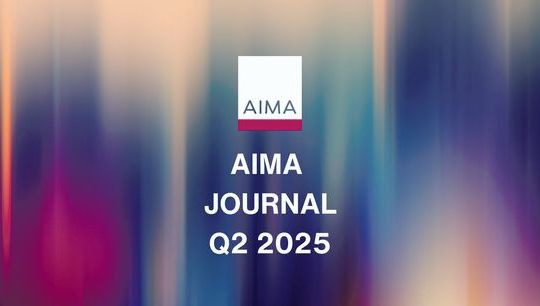AIMA CEO, Jack Inglis - What’s in store for the alternative investment industry in 2023?
Published: 11 January 2023
What’s in store for the alternative investment industry in 2023?
1. Alternatives will again outperform traditional investment styles
Overall, 2022 was a good year for hedge funds when average performance is set against the backdrop of double-digit downturns across public markets in bonds and equities. The HFRI asset weighted index showed a gain of close to 1%, while traditional 60/40 portfolios lost 17%. We can say that the industry once again underscored its utility as a protector of wealth and provider of uncorrelated returns.
Nevertheless, there was wider-than-usual disparity in performance among hedge fund strategies; macro, trend following, and many multi-strategy funds stood out as the best performers, while long-biased equity long/short funds suffered.
With most forecasts for the coming 12 months predicting market volatility to continue, the benefits of investing in hedge funds will continue to attract capital as investors diversify away from the traditional 60/40 model of investing. We expect long/short equity to have a better year as stock-picking opportunities on both sides abound.
2. Bifurcation of the hedge fund industry to continue
The pandemic and its aftermath have witnessed a deepening bifurcation of the hedge fund industry, with money and talent becoming increasingly concentrated among the largest hedge fund firms. Central to this shift has been the rise in influence of multi-strategy/asset managers, many of whom have delivered among the best gains for investors over the past few years. As institutional investors shift further to hedge funds, we expect these firms to be favoured, resulting in an even greater gulf in assets under management between the largest fund managers in the industry and the rest.
3. Industry to focus on costs as inflation persists
With inflation levels at multi-decade highs, the consequential impact on higher operating expenses (including increased technology and data costs, travel costs), not to mention the continued war on talent, will push the industry to further re-evaluate firm processes, structures and working environments in a bid to keep costs more manageable while retaining employees. In a further squeeze to costs, fund managers that are unable to deliver on required performance for investors will come under renew pressure to lower their fees.
4. The resolve of ESG proponents will be tested
2023 may prove to be a pivotal year for the sustainable investment movement. The looming threat of a global recession is inspiring investors to re-examine their portfolios and ask difficult questions around what they want from their alternative investment funds when it comes to the application of ESG principles, especially, if it’s uncertain how this will affect returns.
Meanwhile, ESG-related rulemaking across Europe and Asia Pacific is expected to further crystalise, as rules around fund names and disclosures come into effect. The US is also setting its sights on the regulation of responsible investing, although the politicisation of ESG across the red-blue divide could frustrate some efforts on that front.
5. 2023 regulatory initiatives will further increase the compliance burden
The global regulatory agenda for the alternative investment industry is rarely quiet, but the deluge of radical proposals from the US SEC last year has sent the industry’s legal and advocacy teams into overdrive. 2023 will see many of these proposals being put into action and there will be plenty of implementation work ahead. AIMA is well prepared for this.
The UK has begun its decoupling from the EU regulatory regime, which, although welcome in parts, will create more work for managers. In the EU, the AIFMD review will be finalised but is unlikely to require substantial changes to firms’ policies.
6. Crypto winter to darken, but digital assets are here to stay.
None more so than any other group, the crypto sector was very glad to wave goodbye to 2022. Despite the tumultuous year, crypto observers are still cautiously optimistic, arguing that the shakeout will ultimately produce a more robust digital asset industry. The inevitable regulation will go some way to restoring faith, but it is expected to be a challenging year for fundraising and a significant pause in the road regarding institutional adoption.
What is without argument, however, is the viability of blockchain technology with a growing number of use cases across an increasing variety of global supply chains. We also witness some of the biggest industry names ‘tokenising’ their funds to bring capital formation to the blockchain enabling capital raising to become more efficient. Despite the hype, the digital assets industry remains in its infancy, and as such, will continue to experience enormous innovation as it finds its place within established financial markets.
7. The next wave of capital into alternatives will come from retail investors
The democratisation of the alternative investment industry has always seemed just over the horizon but that seems closer than ever now that the bull market in equities and bonds is over. While many institutional investors are already full weighted in alternatives, private wealth assets by contrast are substantially underweight. This represents a huge opportunity of new capital for managers over the next decade if they can adapt their distribution channels and adopt the appropriate fund vehicles to access this.
Jack Inglis, CEO, AIMA.








